UK Drive: Is the Volkswagen Tayron just another SUV?
The new model sits in between the firm’s Tiguan and Touareg SUV, but is it any good? Cameron Richards reports.

What is it?
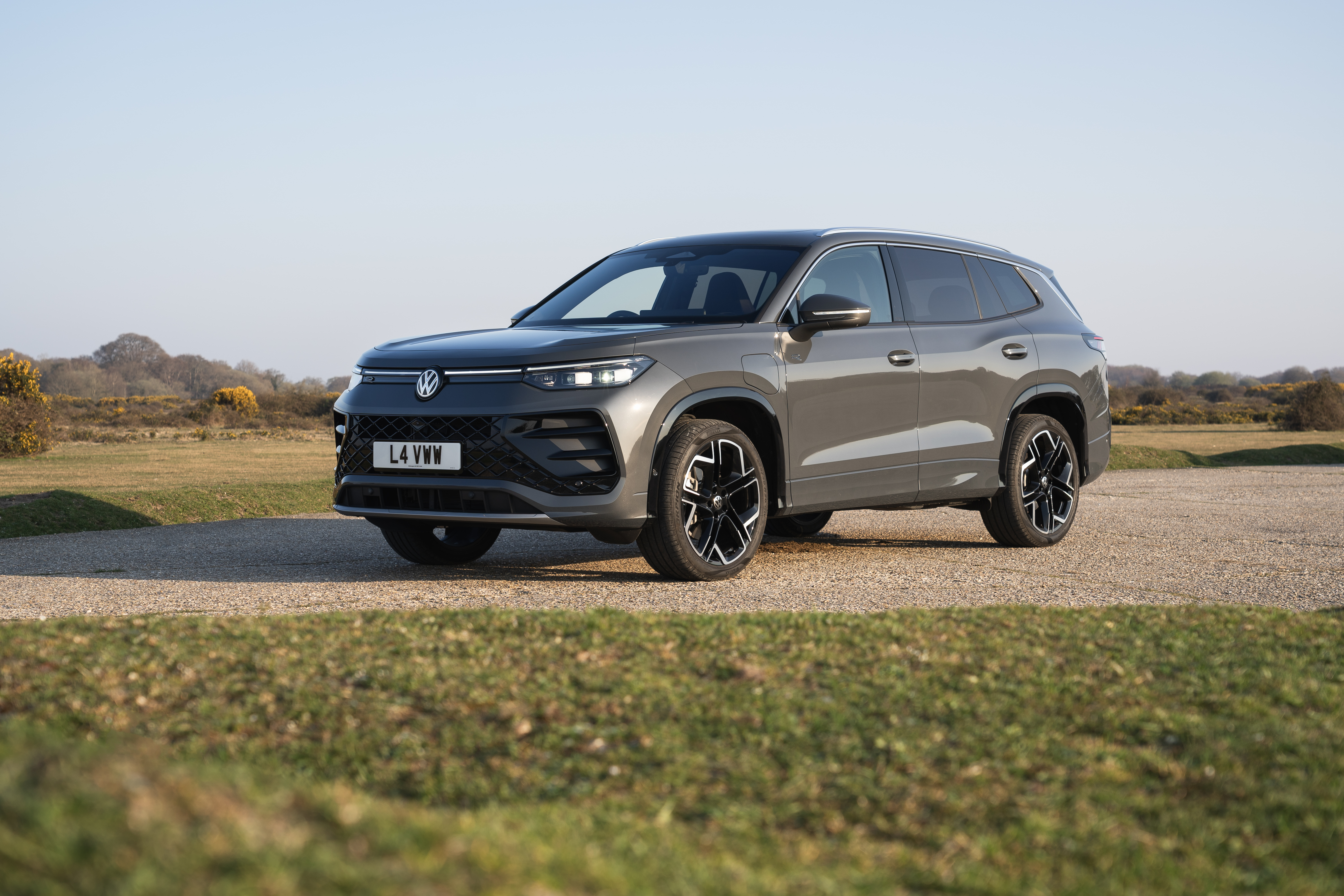
The SUV segment is positively booming right now and that popularity shows no sign of stopping.
Volkswagen has been the brand of choice for those who want a practical, sensible car that comes with a classless image and great build quality.
Its range of SUVs has grown in recent years, but in keeping up with modern trends, the German firm has gone and added another offering into the mix – introducing the Tayron.
What’s new?
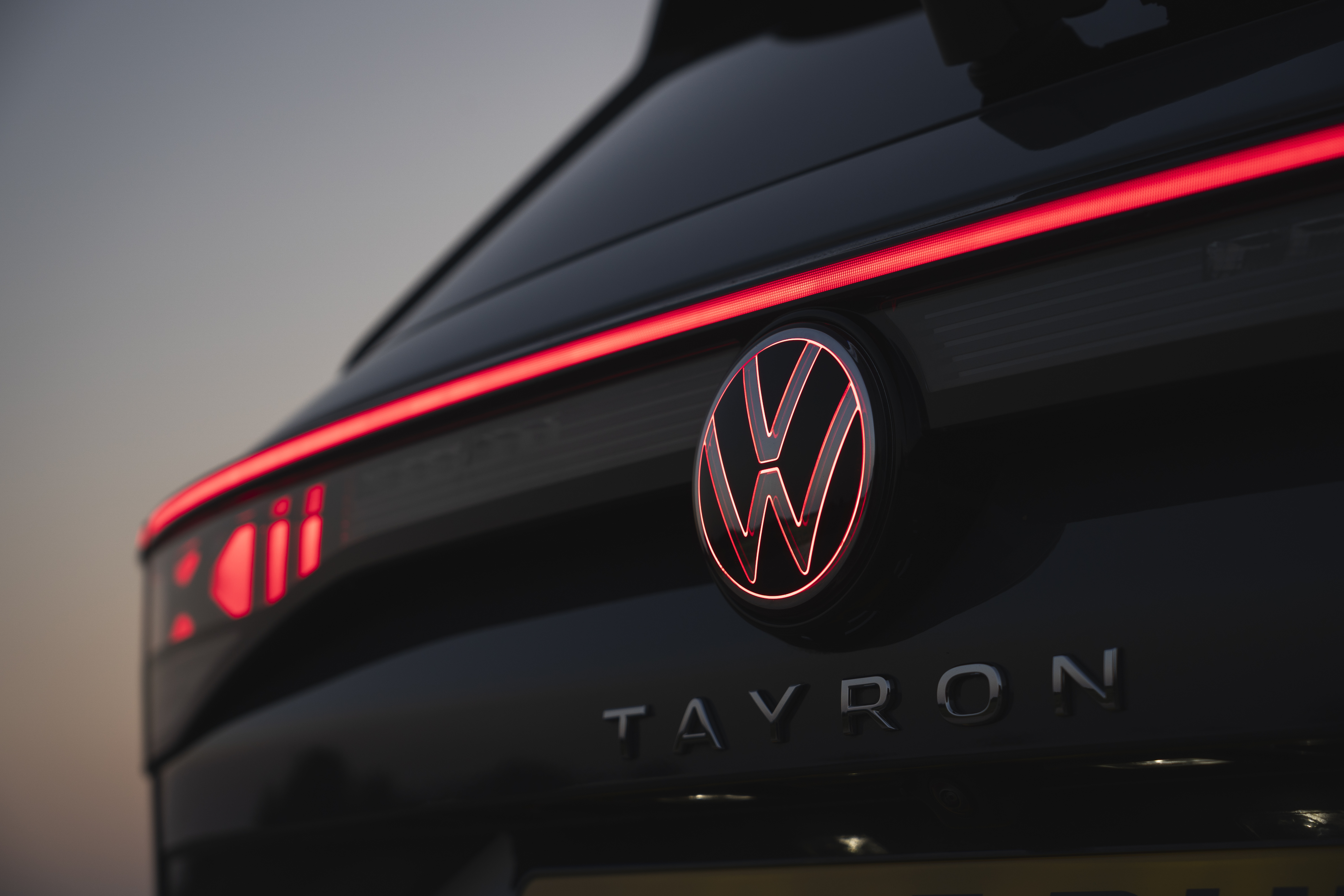
Volkswagen has a great history of building SUVs, but the Tayron is a completely new model for the brand.
It sits in between the smaller Tiguan and larger Touareg in the firm’s model lineup and comes equipped with several different powertrains.
It replaces the old Tiguan Allspace, which wasn’t a big seller here in the UK, but to boost its appeal, Volkswagen offers this new model with a choice of five or seven-seats.
The car features, as an option, Volkswagen’s Adaptive Chassis Control (ACC) and there is standard acoustic front glass, all to help make the driving experience more refined.
What’s under the bonnet?
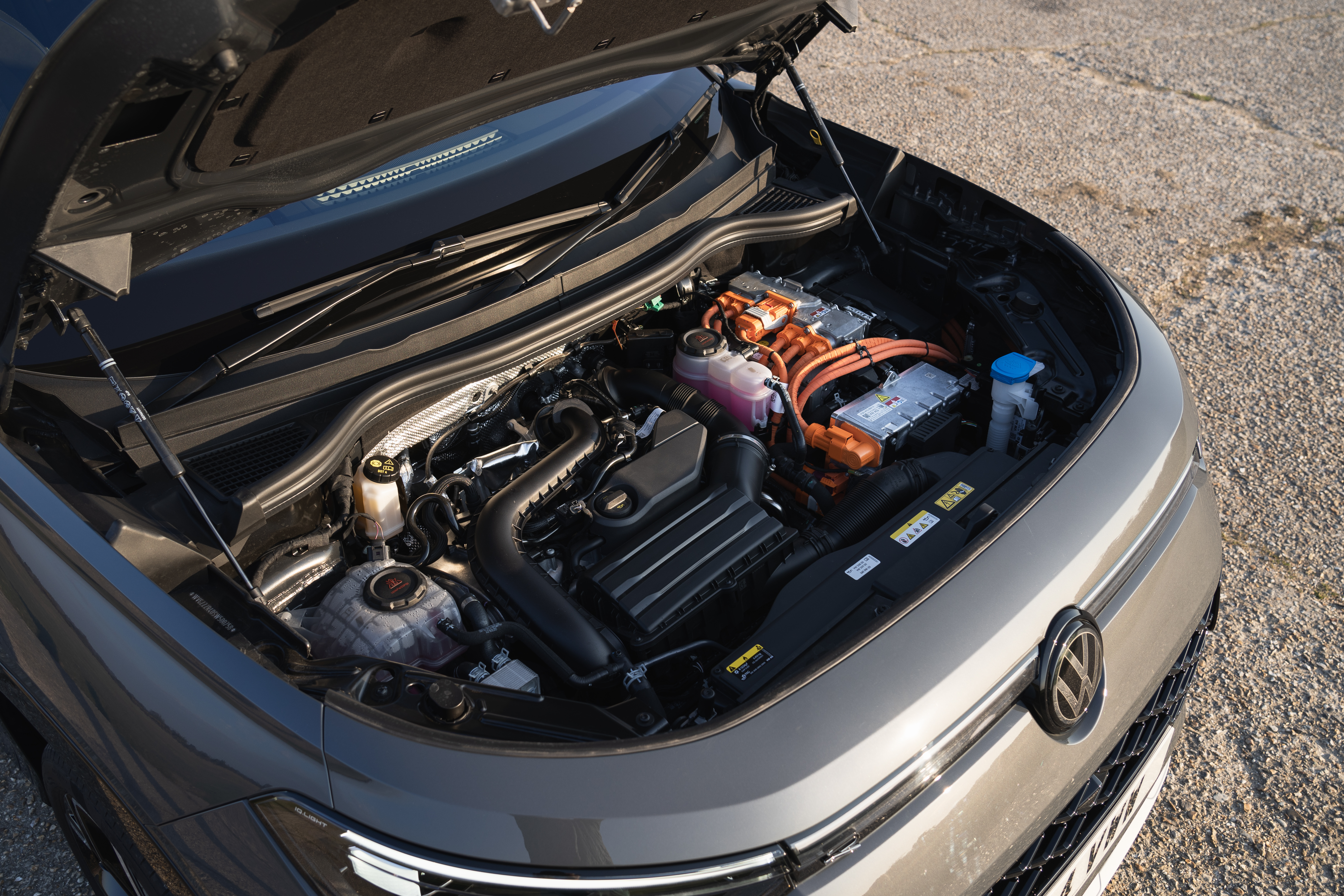
Under the bonnet, there are several different engines including petrol, diesel and plug-in hybrid.
We’re driving the latter which comes equipped with a 1.5-litre turbocharged petrol engine mated to an electric motor and 19.7kWh battery pack. In terms of output, the car pumps out 201bhp and 250Nm of torque. It can do 0-60mph in 8.4 seconds and will run onto a top speed of 130 mph. Volkswagen claims the car achieves between 72 and 76 miles on electric power – depending on which trim level you go for.
There is also a higher-powered plug-in hybrid that produces 268bhp and has the same torque figure as the model we’re driving.
Running costs should be low, with the PHEV variant kicking out between nine and 11g/km of CO2, while the car can do a claimed 614.4 mpg on the combined cycle – though take this latter figure with a pinch of salt, as it’ll only be achieved when the batteries are full and you’re travelling mainly on electric power.
What’s it like to drive?
The Tayron is very comfortable to drive, with the ride managing to be supple, despite our test car’s sports suspension. Visibility all round is great, thanks to the large glass areas and the acoustic glass on the front windows helps absorb any road and wind noise.
It may not be the most entertaining on a twisty road, but the car can hold its own with limited body roll and there is more than enough traction from the tyres.
Our plug-in hybrid model does a great job of being smooth and quiet in town. However, put your foot down and the engine screams into life with a rather unpleasant grone from the engine. Plus, the transition between combustion and electric power can be a little jerky at times, making the whole powertrain feel not as well set up as it could be.
How does it look?
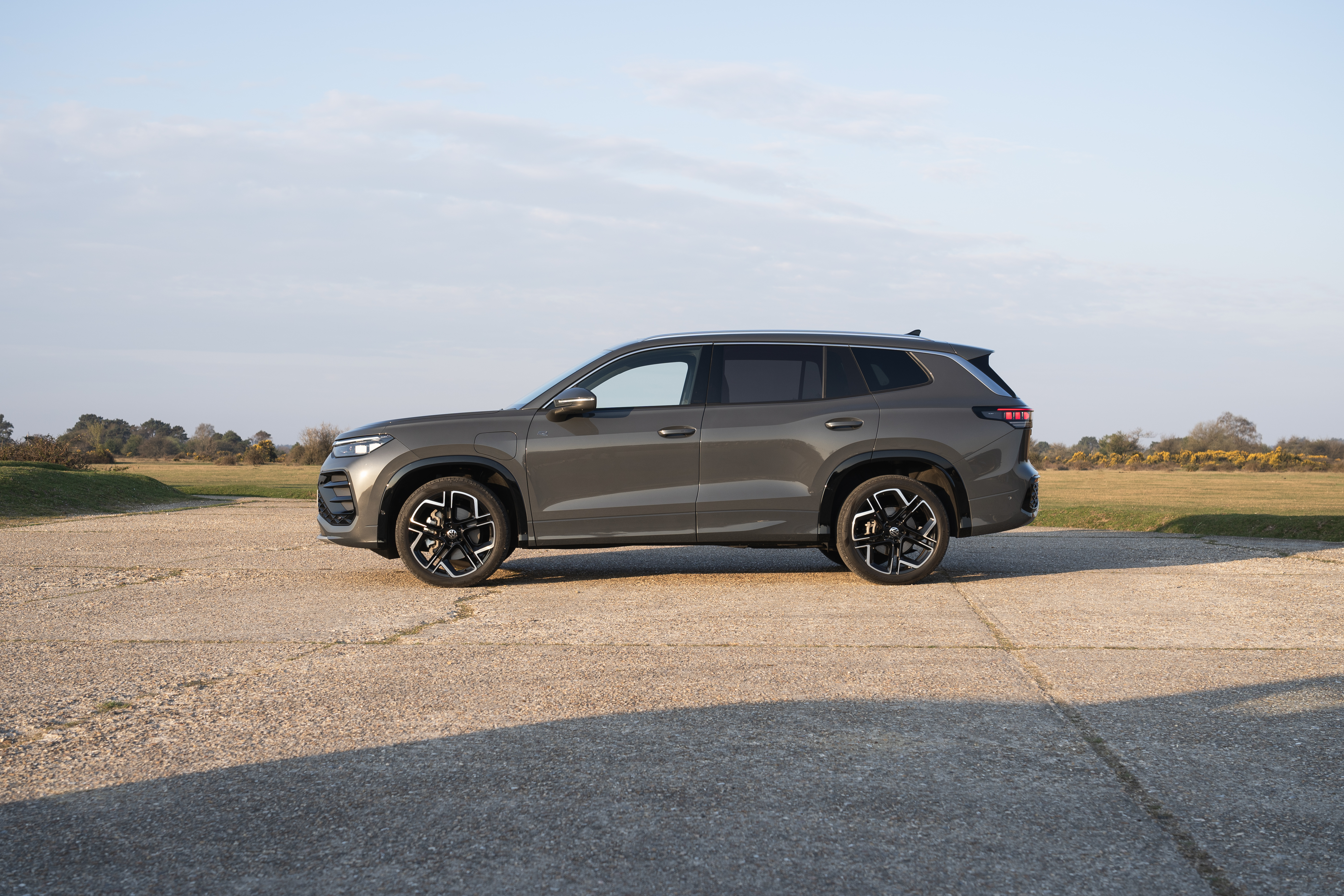
The Tayron shares similar design cues to other SUVs in the firm’s lineup.
At the front, there’s wraparound LED headlights that morph into a single LED light bar with an illuminated Volkswagen logo, and the rear tailgate has a similar single light bar design – reminiscent of that to the larger Touareg SUV.
Our test car’s styling is enhanced further with lowered suspension, ‘R’ badging on the front wings, diamond-cut alloy wheels, a mesh-effect front grille and honeycomb-effect lower rear bumper.
What’s it like inside?
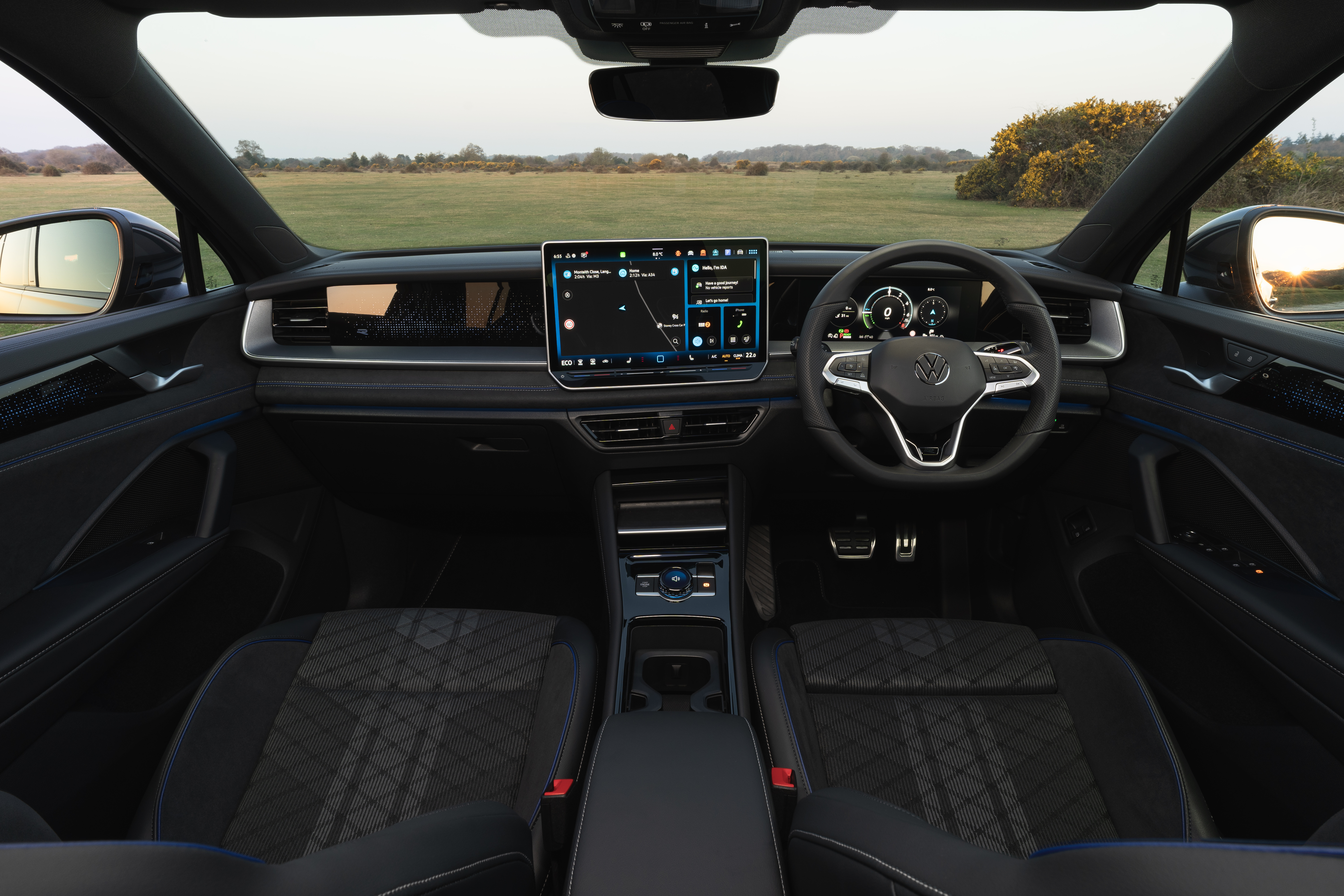
The Tayron has a similar dashboard layout to the Golf hatchback.
Our test car comes fitted with bucket seats, blue stitching and tartan patterned upholstery. There is Alcantara featured on the door cards and on the dashboard, which gives the cabin a much sportier feel.
It also features a larger 15-inch infotainment screen and 10-inch digital cockpit, while the quality of the materials used throughout is excellent with lots of soft touch plastics.
There are physical buttons on the steering wheel, but it’s a pity that Volkswagen still burys the climate control functions into the touchscreen, which can be annoying. At least there is a physical rotary dial on the centre console to control the volume for the radio.
Space up front is plentiful with very large door bins, a decent glove box, two cup holders, a centre armrest with underneath storage, alongside a hidden compartment in front of the parking brake and start button.
In the back, the Tayron is simply cavernous with loads of rear head and legroom, while foot room is more than enough with passengers being able to slide their feet under the front seats. The rear bench can also slide backwards and forwards to increase boot space or legroom further.
Our plug-in hybrid test car comes with five seats only, due to the battery pack eating into space. But you still get an impressive 705 litres of space and a completely flat loading bay.
The standard car comes with even more space at 885 litres, and the seven-seater model offers 345 litres with the third row in place– making the Tayron one of the best-in-class for boot capacity.
What’s the spec like?
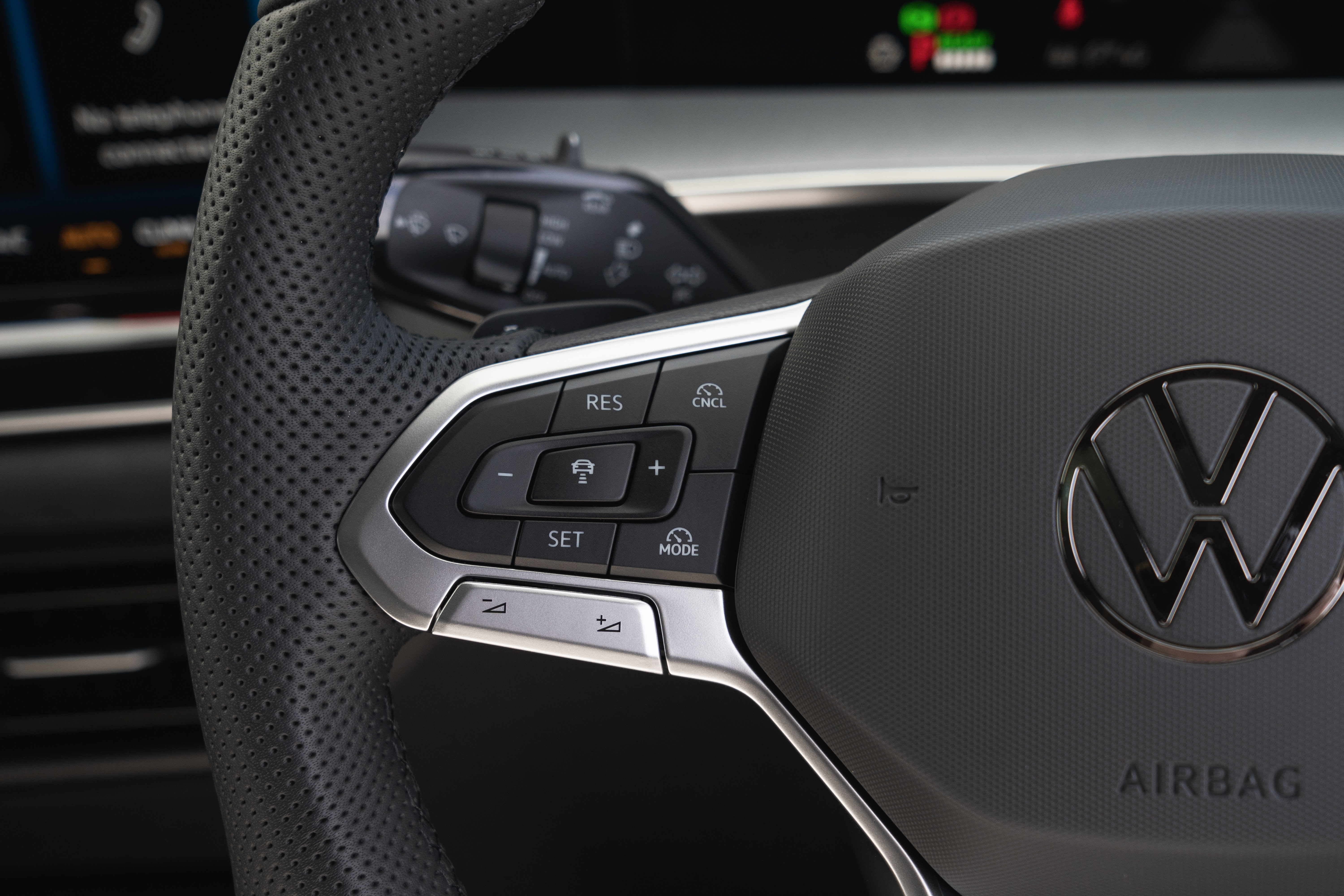
There are several different models to choose from including Life, Match, Elegance, R-Line and R-Line Edition.
Prices start at £40,130 for the entry-level car and includes 18-inch alloy wheels, a reversing camera, satellite-navigation and Volkswagen’s 10.25-inch Digital Cockpit Pro instrument cluster.
R-Line models come in at £43,105 and boast bespoke exterior and interior styling, 20-inch alloy wheels, massaging front seats and laminated front glass.
However, prices soon start to escalate if you want a plug-in hybrid model, with our test car priced at over £50,000.
Verdict
Volkswagen always seems to get it right when it comes to family cars and the Tayron is proof of that evidence.
This new model should go down well with large families as it offers an impressive amount of interior space, while managing to be comfortable, refined and efficient.
It’s not the most dynamic car to drive in this segment and the petrol engine in the plug-in hybrid model does like to shout a bit.
But, if you’re after the option of five or seven seats, need masses of boot space and want a premium feeling interior, then the Tayron will soon become a school run favourite.





